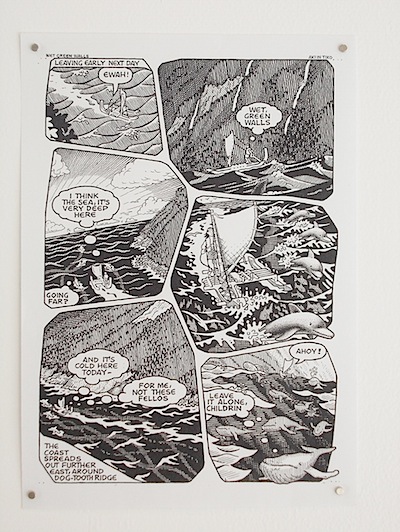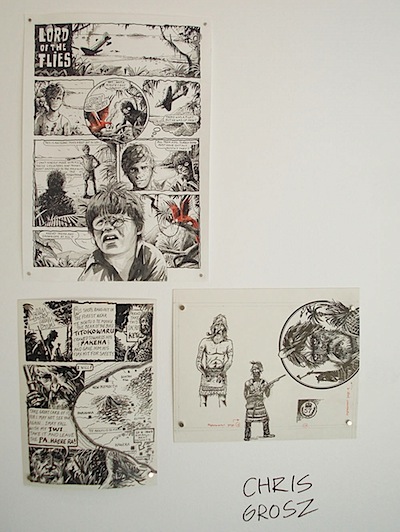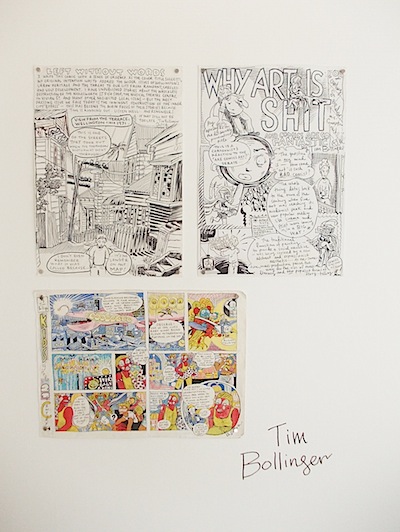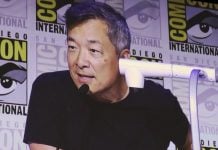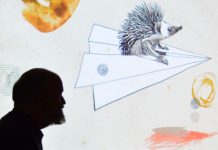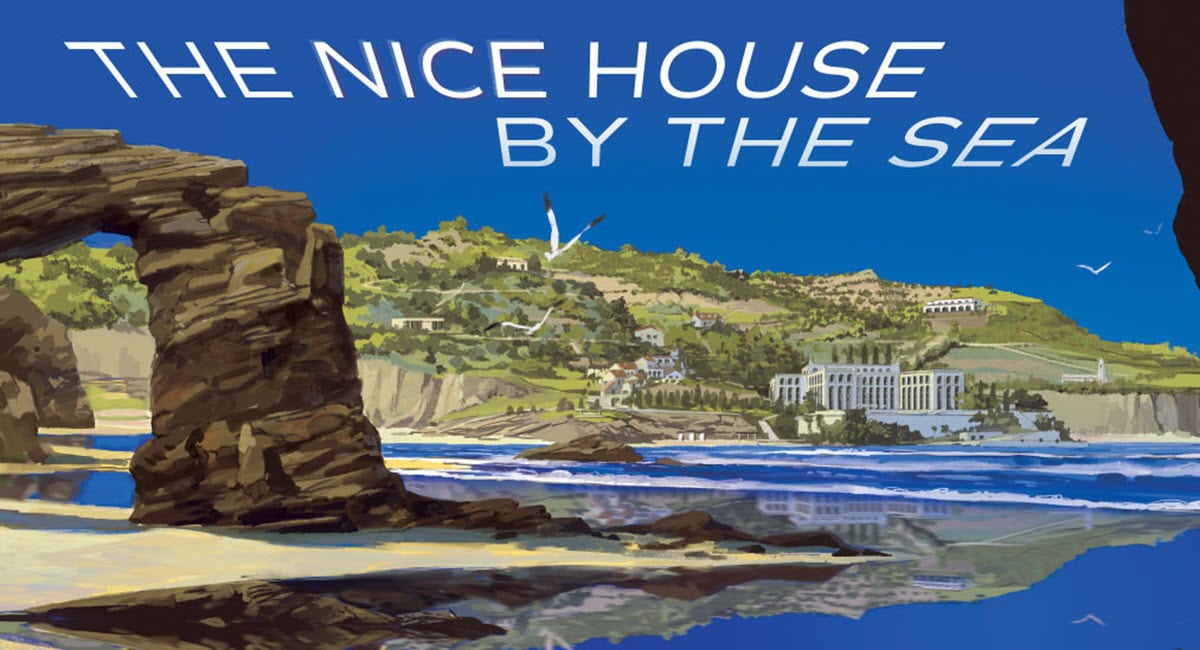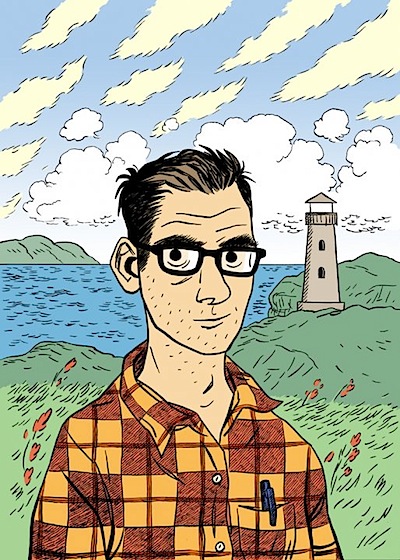
by Matt Emery
[Editor’s note: the New Zealand comics scene has been developing for quite a while, and NZ’s best known cartoonist, Dylan Horrocks, has been a major force in helping it emerge. Here’s a report on an gallery exhibit of contemporary NZ cartoonists that offers glimpse at the current state of cartooning.]
New Zealand cartoonists are represented in the Auckland Arts Festival during March and April 2013 with an exhibition, Nga Pakiwaituhi: New Zealand Comics and Graphic Novels. Nga Pakiwaituhi is curated by Dylan Horrocks and displayed in Gallery Two at The St Paul Street Gallery in Auckland City. On April 10th the gallery will hosted a panel discussion on New Zealand comics with Dylan Horrocks, Sam Orchard, Adrian Kinnaird and Sarah Laing.
I asked Dylan Horrocks a few questions about Nga Pakiwaituhi and the current state of comics in New Zealand.
Q: How did the Nga Pakiwaituhi: New Zealand Comics exhibition come about?
DYLAN HORROCKS: Two things happened. The first thing was I was approached by the Treviso comic book festival in Italy about putting together an exhibition of New Zealand comics for them and I started getting that organized. The other thing that happened was a touring exhibition of German comics organized by the Goethe Institut was coming to New Zealand and the St Paul Street gallery in Auckland where it was going to show contacted me and asked if I could put together an exhibition of New Zealand comics to run alongside that. I looked at the dates involved and thought okay I can kill two birds with one stone. So I organized the Italian show and that went off to Italy and was a great success. In the meantime I decided that the Auckland show was an opportunity to do something a bit bigger than the Italian one. So the Italian show had eleven or twelve artists and the Auckland show is thirty artists. So we’ve crammed them in.
Q: You mentioned in an interview back in 2000 that New Zealand cartoonists generally had a hostile attitude towards exhibiting in galleries. What has changed since then?
HORROCKS: I may have overstated things a little back in 2000 (laughs). Certainly there wasn’t that much interaction between cartoonists and art galleries at the time. There were a couple of exceptions, there was a show at the Gus Fisher gallery in Pakuranga. There was a show there during the 1990’s and the Center for Contemporary Arts in Christchurch ran quite an interesting show on the relationship between fine art and comics in New Zealand. In both of those cases it took a little bit of diplomacy to get the two sides really kind of talking clearly to each other. I think comics were quite underground then on the whole. I don’t know if all that much has changed, when I say that, actually the relationship between the gallery world and comics is fantastic right now (laughs). It’s just been a gradual incremental increase in the dialogue between those two scenes. There have been a lot of exhibitions of comics in the last twelve years in New Zealand.
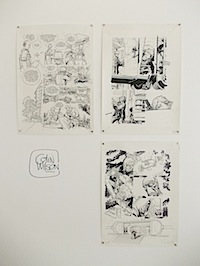
Q: I recall when the High Seas Gallery was running in Auckland they regularly hosted comics related events.
HORROCKS: There was a big exhibition at the Auckland City Art Gallery as well on comics in general and New Zealand comics in particular. The city gallery in Wellington has included comics in a couple of it’s shows and there’s been a number of dealer galleries who have done comic shows as well. There’s just been more of it. I think the profile of comics artists in the broader gallery world has grown a lot in the last ten or fifteen years and that’s a global thing that’s not just New Zealand. A lot of fine artists are exploring what they can do with comics. I think that’s been one of the big trends in the last fifteen years within comics that you have a lot of people coming out of art school and deciding that their chosen medium is comics for their art. So they’re coming into comics not from the perspective of wanting to make it in the comics industry, they’re just choosing it as their personal favorite art medium. So it means we’ve got a different atmosphere around it.
Q: Broadly speaking are there defining characteristics or common threads shared in the work of New Zealand cartoonists?
HORROCKS: Probably. What I see very strongly is the relationship New Zealand cartoonists have with different threads running through comics internationally. Comics are a very international scene with a lot of different sub cultures within that scene. New Zealand comics includes people exploring all of those threads. In a way the first and most obvious thing I see is the way in which New Zealand cartoonists are plugged into and engaged with all sorts of things that are happening internationally in comics and some of them are really working at the cutting edge of those threads.
What sort of brings them together? I think there’s one thing which is that New Zealand hasn’t had a commercial comic book industry at least since the 1950s. So the people who are drawn to comics are drawn to it through their own personal obsession with the medium and if they continue working at it long enough, they’re doing it in spite of the fact that they’re not being paid a whole lot of money. It means that a lot of cartoonists have emerged with very distinct personal voices because they’re not shaping themselves to the requirements of a commercial industry. Having said that, it’s kind of changing a little bit because the commercial industries, internationally, have become much more global and because of the internet it’s become much easier for a cartoonist even in New Zealand to be working for publishers in America or Europe or wherever. So we now have a number of cartoonists who haven’t had to leave the country, they’re actually working from New Zealand but they’re working for the international industry. They still seem to kind of retain some of that New Zealand independence that the scene here tends to have had.
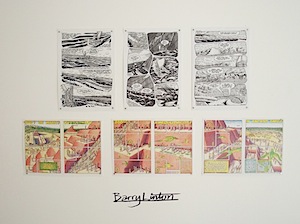
In the exhibition there are also a number of cartoonists who did leave New Zealand and are based overseas and working in the overseas industry but retain a very strong connection to the New Zealand scene. That’s people like Roger Langridge and Colin Wilson. Their connection to the local scene kind of works both ways. Particularly in Roger’s case, his work gives the local scene a certain amount of inspiration and motivation. Also at the same time he’s very connected with what’s happening here.
There are certainly quite a few local cartoonists who’s work feel incredibly New Zealand in terms of the landscapes, the atmosphere, and the themes. Some of those would be Timothy Kidd, Mat Tait, Barry Linton, some of Ant Sang’s work, Lars Crawley, and Adam Jamieson. Barry Linton to me is one of the most distinctly New Zealand cartoonists ever. His work draws on all sorts of influences ranging from rural landscapes and the chiseled style of a lot of Polynesian art. There’s some very interesting things going on in his work that are very very New Zealand.
Q: You’ve functioned as a ‘New Zealand comics ambassador’ for a number of years, has that interfered with you making comics?
HORROCKS: It does take time away from getting my own work done. The lovely thing is there are now so many people who are involved with New Zealand comics in all sorts of ways and who are excited about New Zealand comics, promoting them and publishing them and all sorts of things, I feel like now it’s much easier for people like me who have been doing it for a long time to step back and let other people do that. I put this exhibition together with St Pauls St. Gallery and I know of a couple other exhibitions that may be happening in the next year as well and they’ve got nothing to do with me and that’s really exciting. The lovely thing is that I’m constantly being surprised by things now that I knew nothing about. They just bubble up, some group somewhere is making it happen and it starts getting a whole lot of publicity and then I hear about it. It’s generally a large healthy scene I guess is what I’m getting at. It’s big enough to look after itself (laughs).
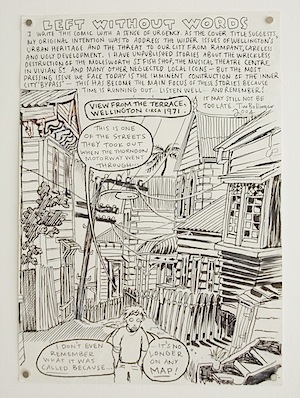
It was nice doing this and what I’m really looking forward to is going to the next exhibition of New Zealand comics and seeing what that curator has put together. I’m also very aware of the people who aren’t in this show. There’s thirty people in it and there’s a lot of exciting work in there, it ranges from Colin Wilson—who started publishing stuff in the seventies—through to people like Sam Orchard and Sarah Laing who’ve really kind of emerged in the last couple of years. I’m aware that thirty’s not enough. You can’t do one show anymore and give a comprehensive survey of New Zealand comics, Tim Gibson’s not in the show, Damon Keen’s not in the show, James Davidson’s not in, there are definitely gaps but the reality is that you can’t squeeze everybody into one show anymore and that’s why it’s so exciting that it’s bigger than one show now and there’s going to be other stuff happening. No one curator has the responsibility of representing everything happening in New Zealand comics. I love that, I find that really exciting.
Q: Can you update us on your current projects The Magic Pen and the American Dream?
HORROCKS: The Magic Pen has two chapters to go. I’ve drawn all of it but two chapters and that’s for volume one. It’s planned as a three volume story and the first volume I should be finished with it in a few months. The American Dream I’ve been working on that with a lovely American artist called Karl Stevens who’s been doing artwork for it in watercolor and it looks absolutely beautiful. So both of them are currently in progress and being worked on as we speak.
